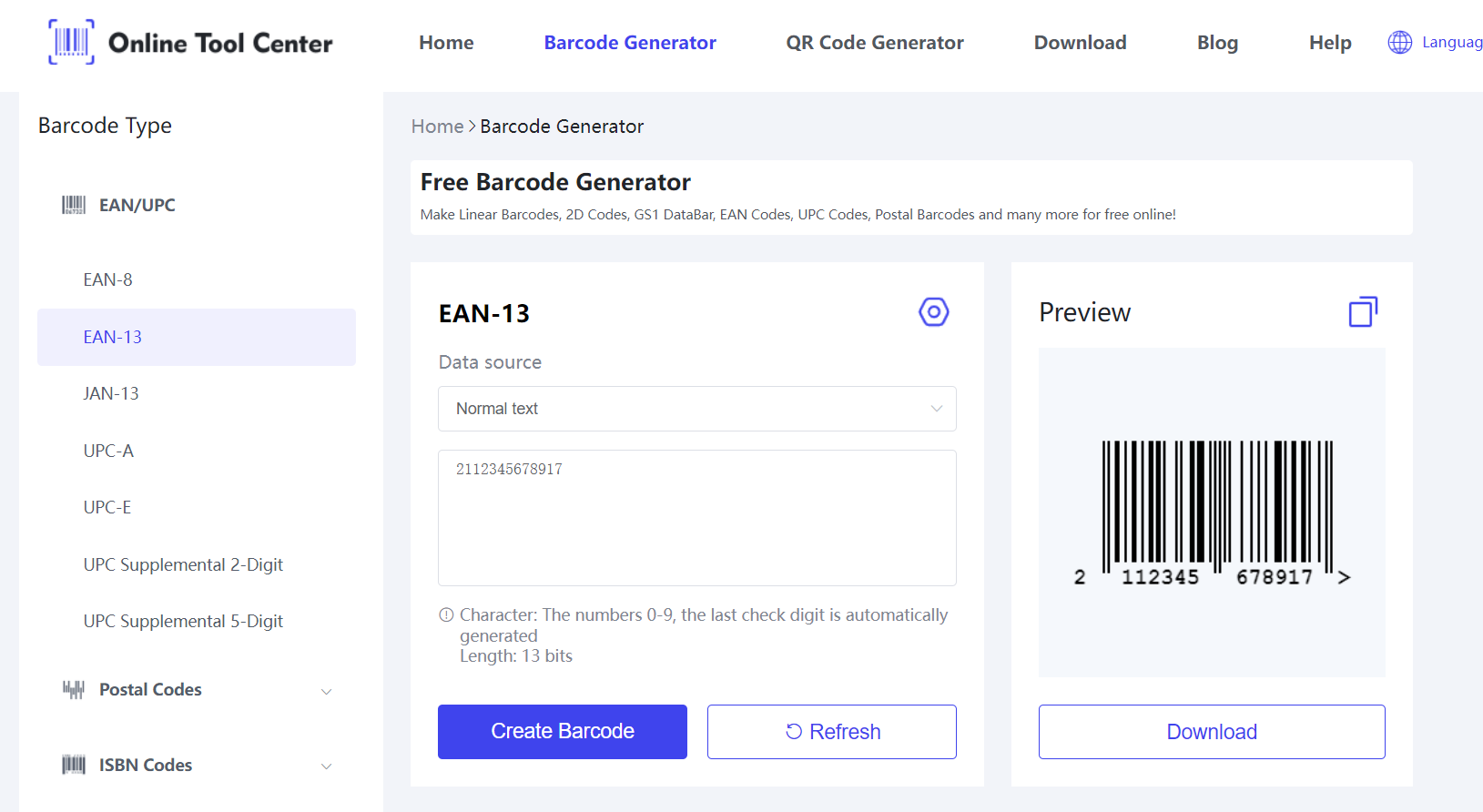The Type of Barcode For Furniture Manufacturing
In the furniture manufacturing sector, the choice of barcode symbology plays a crucial role in the efficiency and reliability of tracking and managing operations.
Here are key barcode symbologies commonly utilized in the furniture manufacturing industry:
● EAN-13: This symbology is designed to provide a global standard for product identification and is commonly used for retail labeling of furniture.
EAN-13 barcodes are used for identifying products globally, making them ideal for tracking and managing inventory across different countries and retail environments.

● Code 128: Widely recognized for its high-density data capacity, Code 128 is versatile and can encode all 128 characters of ASCII.
This makes it suitable for packaging, shipping, and tracking applications where a compact barcode with extensive information is necessary.
● Data Matrix: Preferred for its ability to encode large amounts of data into a small space, the Data Matrix code is often used for marking small items, components, and detailed parts of furniture.
I's robust, with error correction capabilities that allow readability even when damaged, making it ideal for challenging manufacturing environments.
The benefit of Using Barcode in Furniture Manufacturing
Barcodes help speed up various processes within the manufacturing environment, including:
● Inventory Checks: Rapid scanning of barcodes during inventory checks reduces the time required for these tasks.
● Order Fulfillment: Barcodes streamline order fulfillment processes, ensuring that products are picked, packed, and shipped accurately and efficiently.
● Restocking: Automated restocking based on barcode data minimizes downtime and keeps production lines running smoothly.
● Reducing Manual Entry Errors: Scanning barcodes eliminates errors associated with manual data entry, ensuring accurate product identification and tracking.
● Improving Data Quality: High-quality barcode data contributes to better decision-making and more reliable inventory records.
Application of Barcode in Furniture Manufacturing
1. Labeling Process
Effective labeling practices are essential for maintaining barcode readability and durability, especially in the furniture industry where products are made from diverse materials.
Best practices include:
● Choosing the Right Material: Use durable labels that can withstand the manufacturing environment.
● Proper Placement: Ensure barcodes are placed where they are easily accessible and not prone to damage.
● Testing for Readability: Regularly test barcodes to ensure they can be read by scanners without issues.
2. Streamlining Inventory Tracking
● Automating Stock Counts: Barcodes automate the process of counting stock, reducing the need for manual checks and minimizing human error.
● Tracking Raw Materials: Barcodes facilitate the tracking of raw materials from the moment they enter the warehouse until they are used in production.
3. Optimizing Supply Chain Management
Barcodes play a vital role in optimizing supply chain management by:
● Improving Transparency: They provide transparency across all stages of production and distribution, allowing for better coordination among stakeholders.
● Enhancing Collaboration: Barcodes enable better communication and collaboration between manufacturers, suppliers, and retailers, ensuring a seamless flow of goods.
Emerging Technologies
Emerging technologies are set to further enhance the capabilities of barcodes in the furniture industry. These include:
● RFID: Radio Frequency Identification (RFID) offers advanced tracking capabilities, enabling the monitoring of items without line-of-sight scanning.
● Mobile Scanning Solutions: Mobile devices equipped with barcode scanning capabilities allow for greater flexibility and efficiency in inventory management.
● Future Prospects: The continued evolution of barcode technology promises even greater improvements in efficiency, accuracy, and cost savings for the furniture industry.
Barcode Scanners for Furniture Manufacturing
Barcode scanners are vital in furniture manufacturing, enhancing efficiency and accuracy in inventory management.
They quickly read barcodes like EAN-13, Code 128, and Data Matrix, speeding up inventory checks, order fulfillment, and restocking.
These scanners reduce manual entry errors, ensuring precise product tracking and reliable data.
By streamlining operations and improving data quality, barcode scanners significantly boost productivity and cost savings in the furniture industry.
In summary, barcodes for furniture manufacturing streamline inventory management, optimize supply chain processes, and reduce operational costs.
Embracing these innovations will ensure manufacturers can meet the demands of modern consumers while maintaining high standards of efficiency and quality.
For more information and to explore our free barcode generator!
FAQs
1. How do barcodes improve inventory management in furniture manufacturing?
Barcodes provide real-time tracking and accurate data, streamlining inventory checks and reducing manual errors.
2. What types of barcodes are commonly used in the furniture industry?
Linear barcodes like UPC and EAN, and matrix codes like QR codes are widely used.




